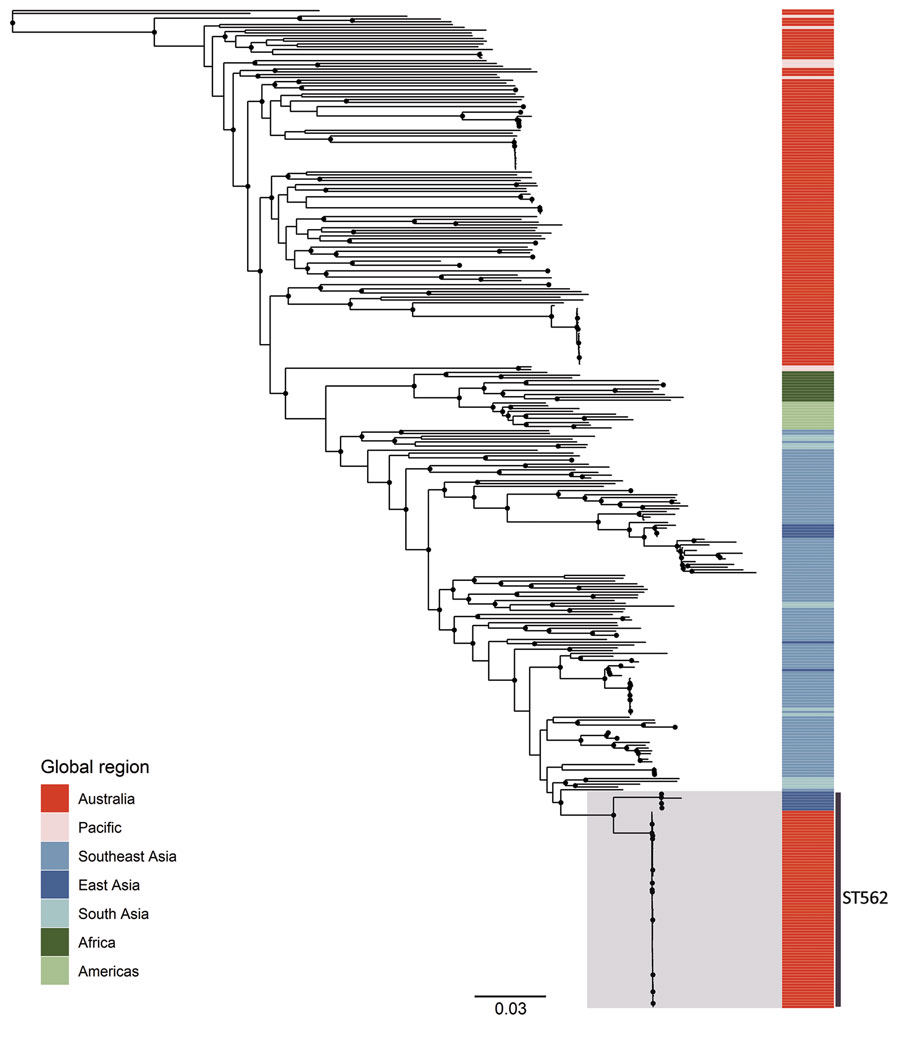Volume 27, Number 4—April 2021
Research
Emergence of Burkholderia pseudomallei Sequence Type 562, Northern Australia
Figure 5

Figure 5. Maximum-likelihood global phylogeny of Burkholderia pseudomallei sequence type 562 isolates from northern Australia, 2004–2019, and genomes available in public sources (Appendix 1 Table). Strain MSHR5619 (GenBank accession no. ERR298346), which had the most divergent genome, was used as the outgroup. Black circles indicate nodes with approximate likelihood ratio >95 and ultrafast bootstrap >95. Colors indicate geographic origin of samples. Scale bar indicates substitutions per site. ST, sequence type.
Page created: February 17, 2021
Page updated: March 18, 2021
Page reviewed: March 18, 2021
The conclusions, findings, and opinions expressed by authors contributing to this journal do not necessarily reflect the official position of the U.S. Department of Health and Human Services, the Public Health Service, the Centers for Disease Control and Prevention, or the authors' affiliated institutions. Use of trade names is for identification only and does not imply endorsement by any of the groups named above.